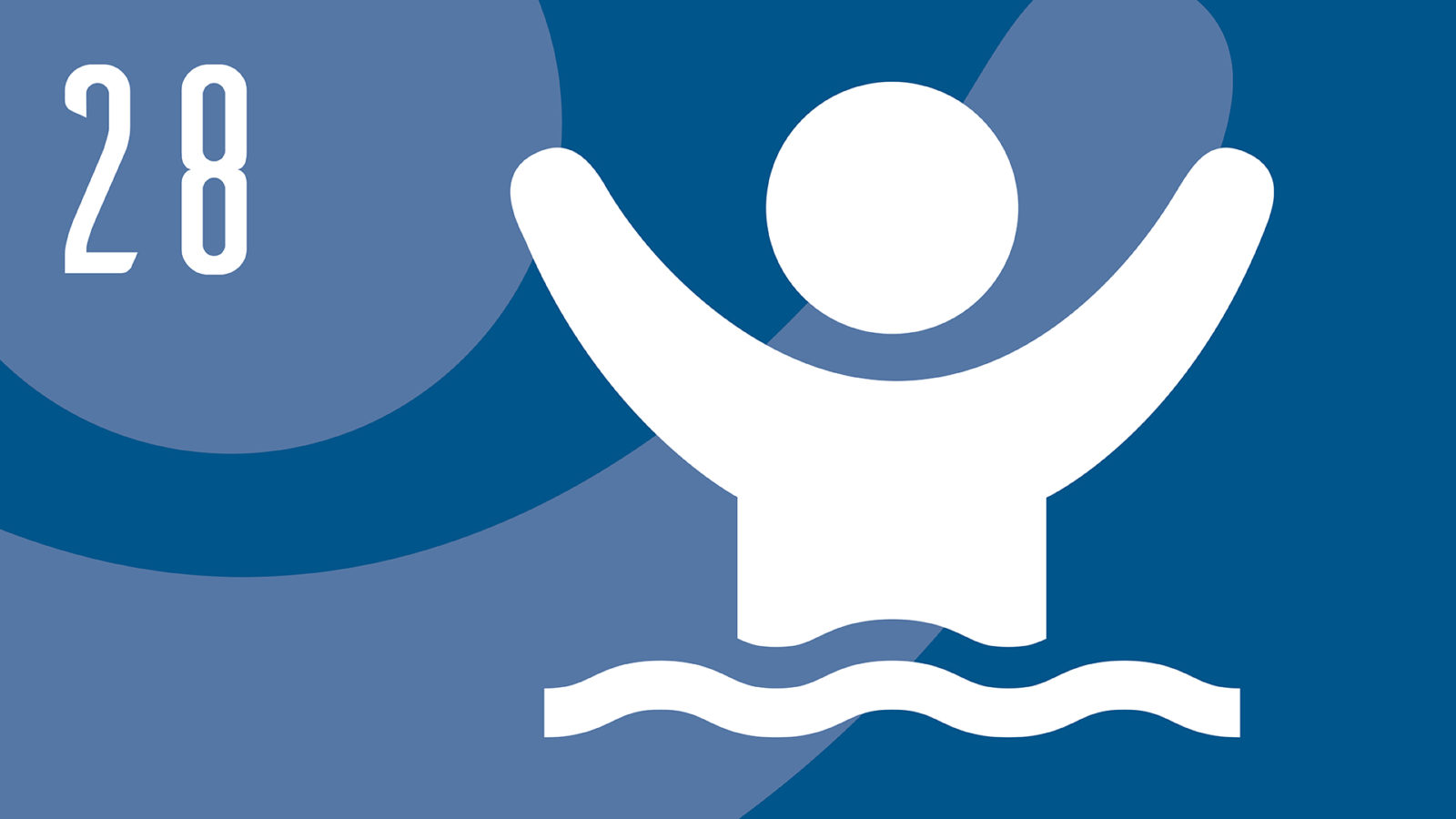Baptism
By baptism we confess our faith in the death and resurrection of Jesus Christ, and testify of our death to sin and of our purpose to walk in newness of life. Thus we acknowledge Christ as Lord and Saviour, become His people and are received as members by His church. Baptism is a symbol of our union with Christ, the forgiveness of our sins and our reception of the Holy Spirit. It is by immersion in water and is contingent on an affirmation of faith in Jesus and evidence of repentance of sin. It follows instruction in the Holy Scriptures and acceptance of their teachings. (Matthew 28:19, 20; Acts 2:38; 16:30-33; 22:16; Romans 6:1-6; Galatians 3:27; Colossians 2:12, 13.)
I sat across from a young lady and held back my tears as I watched hers flow. She was a committed and faithful follower of Jesus but she had never been baptised. Now, two years after I’d met her, she’d finally made the decision. So we sat outside a café and I led her through a simple Bible study on baptism. I wanted to make sure she knew what baptism was. Not the shallow version we often promulgate, but the raw, beautiful and romantic version the Bible reveals.
We were halfway through when tears began to flow. Time and time again, as I lead students through a study on baptism, something happens. Not everyone cries. But almost everyone is moved. Because baptism, it turns out, is much more than just “marrying Jesus”.
So what exactly is baptism? The answers we often hear are that “baptism is the beginning of your journey”, “baptism is a public declaration of your commitment to God” or “baptism is like a wedding, you are marrying God”. None of those are false but there is so much more.
To break it down, we need to go back to Eden. There, we are introduced to a man named Adam—the father of the human race—and his wife Eve. In Genesis 2 the author goes to the trouble of emphasising that the man and his wife were both “naked and they felt no shame” (Genesis 2:25, italics added). Everything was perfect . . . until chapter 3 when Adam and Eve sin and suddenly “realise they are naked”. In other words, shame is introduced.
At its simplest, shame is an issue of identity. Adam and Eve were naked but felt no shame. Then, they realised they were naked and felt shame. It wasn’t their nakedness that had changed. When they made the covering of fig leaves, it wasn’t their body parts they were trying to hide. They were naked before sin, and naked after it. And of course, they were husband and wife so it’s not like there were any surprises. What changed was their “realisation”, which is another way of saying “the way they saw reality”. Shame warped their sense of identity. Shame led them to see themselves differently. They felt a sense of brokenness and self-loathing. They wanted to hide, and hide they did. I suggest the thing they were trying to cover was a new and distorted sense of identity.
Fast forward several thousand years to the hospital room where you were born. It’s a beautiful scene of new life. There you are—Adam’s great-great-great (to the hundredth power) grandchild. Yet underneath this momentous occasion is one nagging reality: you emerge from your mother’s womb with a psyche predisposed to shame and brokenness. And as the years go by, it manifests itself more and more.
I have been there. It’s a terrible burden to carry. No matter what you say to yourself, you just can’t seem to break the cycle. Shame is Satan’s tool to keep us bound to our failures and focused on ourselves. Guilt leads us to repent and move on. Shame stops us from moving on, even after the repenting has been done.
And it is to this experience that the narrative of baptism speaks with overwhelming power. Paul writes:
The Scriptures tell us, “The first man, Adam, became a living person.” But the last Adam—that is, Christ—is a life-giving Spirit. What comes first is the natural body, then the spiritual body comes later. Adam, the first man, was made from the dust of the earth, while Christ, the second man, came from heaven. Earthly people are like the earthly man, and heavenly people are like the heavenly man. Just as we are now like the earthly man, we will someday be like the heavenly man (1 Corinthians 15:45-49).
The “first Adam” is the one we encounter in Genesis—the father of the human race, our father.
The second Adam is Jesus.
All humans born under the first Adam belong to the family of Adam. But Jesus came as the second Adam, to take the place of the first Adam. All humans born again under the second Adam (Christ) belong to the family of Christ. So Jesus is the new Head of humanity for all who accept Him. This means there are two families now: those whose ancestor is Adam and those whose ancestor is Christ.
But why does this matter? Paul explains this a bit more in Galatians 4:4-7:
But when the fullness of the time came, God sent forth His Son, born of a woman, born under the Law, so that He might redeem those who were under the Law, that we might receive the adoption as sons. Because you are sons, God has sent forth the Spirit of His Son into our hearts, crying, “Abba! Father!” Therefore, you are no longer a slave, but a son; and if a son, then an heir through God. [pullquote]
In Paul’s time, when a person was adopted into a family, they assumed the same identity as the family itself. An adopted son was not regarded as an adopted son but as a son. His old identity, debts and obligations were cancelled. He now had an entirely new identity under the new father of the house. His dad was no longer his biological dad. He now had a new father and grandfather, a new family tree and heritage, and was expected to take on their legacy, history and status.
As believers, we have been reborn under the second Adam (Jesus) and adopted into God’s family. We no longer belong to the first Adam. He is no longer our head or our pop-pop. This means everything for which we were under the first Adam—our ancestry, heritage and story with him— has been cancelled. We now have an entirely new identity. We are no longer children of the earthly man but of the heavenly. The shame associated with our heritage in Adam—the dark pages of our story—is completely wiped away by the reality we no longer belong to that family or its identity and heritage. We are now in Christ—a new creature with a new identity. Since shame is a matter of identity, freedom comes only when we receive our new identity by faith in Christ.
Baptism is the ritual Jesus gave us through which we enter into our new identity in Him. It is more than “marrying Jesus”. Baptism is switching families. Baptism is swapping identity.
Jesus took your shameful identity to the cross and He now offers you a new identity and heritage based on His perfect life and sacrifice. And its yours, for free. The scars on His hands are the guarantee that you don’t have to live in shame. You can be free. Paul wraps it all up in Romans 6:4:
We were therefore buried with him through baptism into death in order that, just as Christ was raised from the dead through the glory of the Father, we too may live a new life.
This truth set the foundation for me to let go. And I’m not entirely sure what it whispered to the heart of my friend as we sat under the warm, summer sun. But it said something.
I pray that it says something to you as well and spurs you to do more than just dip into some water but to celebrate the ritual of new life and identity the Bible calls baptism.

Marcos Torres is pastor of Vic Park and Joondalup churches in WA. Marcos blogs at pomopastor.com.






